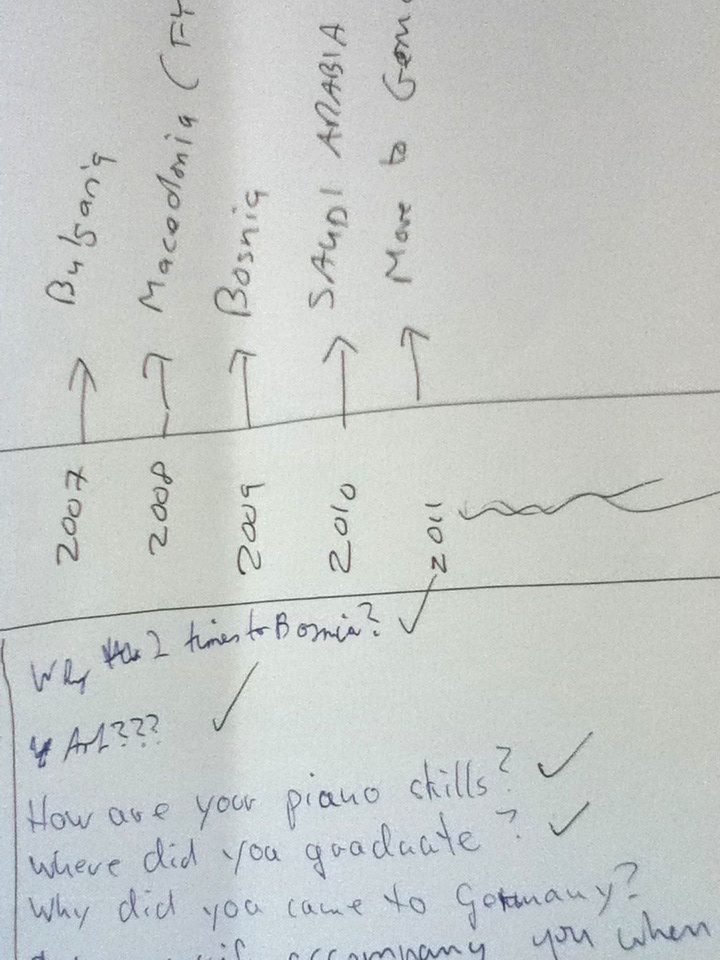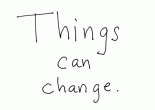Change is never easy. Learners have expectations and come primed for a class based on previous experiences.
Inside change is the implementation of ideas, from the Latin implementem ‘a filling up’.
Implementation is often the stumbling block of good ideas, because doing is harder than thinking.
If you’ve ever been in a pedagogical rut you’ll know that change takes time and energy, which are often in short supply if you’re a busy ELT teacher! Moreover, learner’s expectations can outweigh the enthusiasm of the teacher; abrupt changes in classroom routines can unsettle a class.
With this in mind, if you desire deeper and more radical change in your teaching, it needs to be well-planned, well-designed and carefully implemented – easier said than done!
In this post I’m going to give you some practical tips on how to prepare for decentralised teaching in your classrooms based on my own experience.
Group profile and context
Do you have one group that would be receptive to CHANGE?
I had one group which I thought would make an excellent testing ground for Decentralised Teaching. This was a B2 Business English group meeting once a week, and the learners work for a young internet company. They already worked in a decentralised way, with small teams, project working, and a flat hierarchy.
So, over 9 months, I tried out various activities and tasks which would act as a taster for a full-blown decentralised approach, while still using the coursebook at times.
Here is an example of one activity that I used.
Lesson: Lifelines
The lesson is taken from Alex Case and it’s called ‘Option Trees’, though I call it ‘Lifelines’. In this exercise learners use the Third Conditional and Mixed Conditionals to speculate about past events in their own lives. It tests the learners knowledge and they will ‘notice’ the difference between the two structures. What I added to the task was an element of interaction between the learners.
To set up the task, you’ll need a long piece of paper for each student. In width, anything short of a table-length works well, and cutting the paper in half lengthways then gives you two Lifelines.
 1) Demonstrate that you want the learners to draw a long line from the start of their lives until now: ‘BIRTH’ to ‘NOW’ (tell them “don’t worry about death for the moment”… optional joke).
1) Demonstrate that you want the learners to draw a long line from the start of their lives until now: ‘BIRTH’ to ‘NOW’ (tell them “don’t worry about death for the moment”… optional joke).
You should also leave some space on the paper after ‘NOW’ for the future. You could you use this space to practice future tenses, like Future Perfect and Continuous.
2) Once they have finished their lifelines get the learners to draw a big box next to, or above their Lifelines. Ask the learners to look at each others’ papers and write down questions. These will tend to be ‘Why did you do…..x…?’ questions. Assist with any vocabulary and grammar they might need during this stage. Then the learners sit back down and ANSWER the questions that their peers have written down.
Below is my Lifeline from this class – you can see the questions from learners below:
 3) Next, the learners mark and draw three alternative pathways on their Lifelines, where things MIGHT have been different and write a few words on this line. In the actual class I taught I got learners to write down Third/ Mixed Conditional sentences based on these pathways.
3) Next, the learners mark and draw three alternative pathways on their Lifelines, where things MIGHT have been different and write a few words on this line. In the actual class I taught I got learners to write down Third/ Mixed Conditional sentences based on these pathways.
This stage in the activity really lends itself to Third and Mixed Conditional Structures. If someone writes ‘France’ on an alternative pathway, then the question might be ‘If you had gone to work in France, what would you have done?’
Here the teacher can diagnose how well learners can formulate the target language. If learners can’t produce the Third Conditional then you could input grammar, pointing out the meaning, form and function.
You can also use the Lifelines over a series of lessons, and the activity can be adapted for lower levels, and for different grammatical structures (e.g. Used To).
I’ve used this activity many times and it never fails…
What makes this lesson Decentralised?
There is no central authority. I set up the activity, and was also a participant. The learners were guided to a situation where they had to use the Target Language – rather than the target language coming first from an outside authority.
If the learners have trouble expressing themselves, then I can step in to assist them, but otherwise I’m just facilitating and participating in the activity.
Responsibility is shared. All the participants, including me, are responsible for the success of the activity. I would also say that there has to be perhaps a certain level of trust in the group for everyone to share experiences about past events.
It’s individualised – power is devolved to the level of the learner. They can represent their own lives how they wish. The learners have agency with this task, the Lifeline is not merely a pedagogical tool but also can spark dialogue between learners.
Because of this, the activity is flexible and there are a lot of possibilities for alternative or further use (e.g. putting the lifelines on the wall, comparing lifelines, task repetition at a later date).
The activity also works because learners construct their own lifeline individually. In the work of Piaget, this is related to the important idea of learning being personally meaningful.
Moreover, as Davis (1993) states, “students learn best when they are actively involved in the process”.
Conclusion
This is just one lesson I tried out to see if the class would benefit from a more Decentralised approach. The response was extremely positive, much better than lessons based solely on the coursebook.
This then gave me the impetus to move towards a more radical methodology.
If you want to get ahead – get an acronym
Here is some advice if you are thinking of Decentralising your teaching and implementing change in your classroom: BREATHE.
- Be explicit. Treat your learners with respect, tell them why you’ve decided to change classroom practices and routines (e.g. reducing use of textbooks)
- Run several pilot, or taster lessons in order to gauge enthusiasm, and to get information on what activities might work best.
- Explore. What activities are you going to use to facilitate learning? What will be the right blend of activities? Are there some aspects that need to remain centralised (e.g. assessment)
- Ask for help, assistance and inspiration from fellow teachers and your institution
- Think of the long-term. What are you trying to achieve? What are your short, medium and long-term objectives?
- Have a break! Implementing change is tiring. Remember you don’t have to do everything at once, you can use a coursebook while experimenting with ways of Decentralising and giving the learners more autonomy – it’s not an either/ or situation!
- Evaluate. Build in reviews into your planning, so you can evaluate your progress over time. This can be a valuable activity to do with learners, as they get to evaluate their own learning, and may provide you with important insights
I hope this helps any teachers out there who are thinking about transforming their teaching – good luck!
Paul
References
Davis, B.G. (1993). Tools for Teaching. Jossey-Bass Publishers.
Images
‘Change’ by Marie-Chantale Turgeon on flickr. CC license 2.0.
‘Marooned staffie’ by Macspite on flickr. CC license 2.0.



I had a brainwave about the ‘Lifelines’ Task – Collaborative or Pairwork lifelines! Basically you get a long piece of paper and at one end write NOW the other end a date in the past, e.g. if your learners are around 30 you might write ‘1984’. Then you could also write in intermediate dates, 1990, 1996, 2002, 2006 and so on, if you wish.
But the main task is this. Learners sit on opposite sides of the piece of paper and fill in their lifelines together. I haven’t tried this yet but I think it would be very entertaining! Learners can compare their lives (when they went to college, first girlfriend) during the task or after the task, or both. At the end of class you could even line up ALL the lifelines and ask learners to spot similarities or differences (e.g. we ALL went to university in 1992)!
If anyone uses this lesson – let me know!
paul